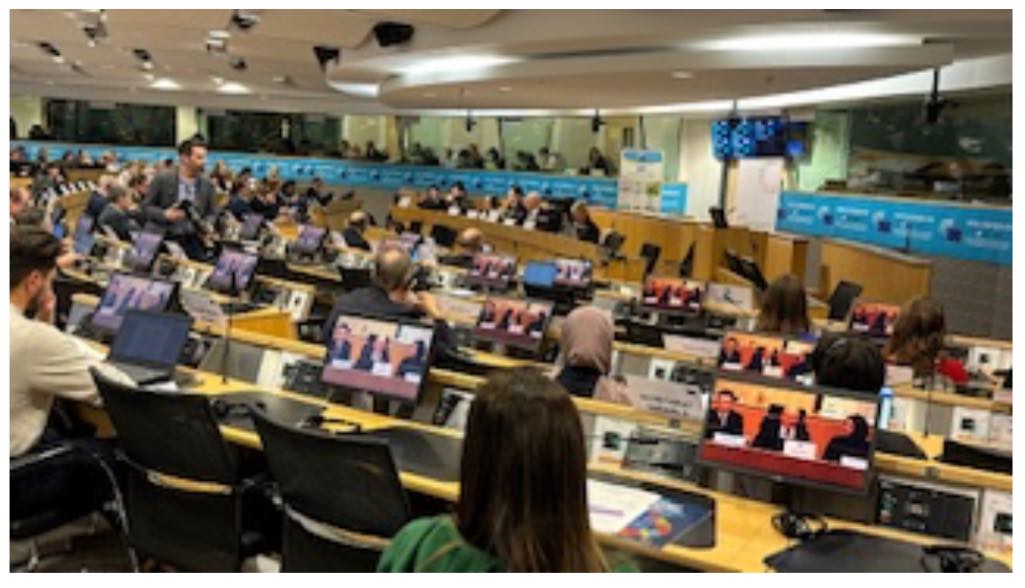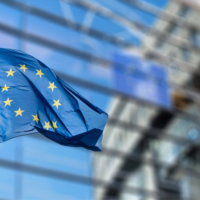Belgium (Brussels Morning Newspaper), The EU will not meet one-third of the Sustainable Development Goals (SDGs) targets by 2030 if current trends continue. This was the primary message of the 5th edition of the Europe Sustainable Development Report (ESDR), which was released on January 25/2024 at an event co-hosted by the Sustainable Development Solutions Network (SDSN) and the European Economic and Social Committee (EESC) NAT Section.
The report specifically highlights the stalling and reversal of progress toward environmental goals and social targets in many European countries, along with the growing problems related to universal access to high-quality services and poverty and material deprivation, which have been exacerbated, at least in part, by multiple crises since 2020.
Since 2019, the ESDR, which was co-designed with civil society, has monitored how well partner nations and all EU members are doing about the SDGs, which were ratified by all UN members in 2015. The SDGs include ending hunger and poverty as well as promoting gender equality, excellent health and wellbeing, gender parity, action on climate change, clean water, and hygienic conditions.
In a press conference that was held in Brussels a few days ago, the representatives from the EU, the UN, and different organizations joined and talked about this report, which is the 5th edition of the Europe Sustainable Development Report (ESDR).
The EU can use this year’s report to further bolster its leadership in the SDGs both domestically and globally in the run-up to the June 2024 European elections and the UN Secretary-General’s September 2024 Summit of the Future.
The focus of the event was the need to act quickly before 2030 to prevent irreversible tipping points in the environment and society.
The world needs to remain laser-focused on putting the 2030 Agenda with its 17 Sustainable Development Goals and the Paris Climate Agreement into action. This was emphasized by Camilla Brückner, Director of the UN/UNDP office in Brussels and a representative of the UN system in the EU. “Europe can maintain its leadership role in executing the SDGs and foster momentum towards their expeditious implementation,” the speaker stated in this press conference in Brussels.
“We cannot afford to slow down action on sustainable development,” stated Zakia Khattabi in this press conference, the federal minister of climate, the environment, sustainable development, and the green deal from Belgium. The cycles in which there is alternating high and low political focus on sustainable development must come to an end. She advocated for a change to the international financial paradigm and emphasized the need to go beyond an SDG-by-SDG approach. In addition, Minister Khattabi expressed gratitude to the EESC for its input in developing a reasonable transition policy framework for the EU.
The SDGs have made significant progress under this European Commission, and Commissioner Gentiloni in particular, as evidenced by the publication of the first-ever EU Voluntary Review and the integration of the goals into our economic governance, according to Petra Petan, a member of the commissioner’s cabinet. Through our financing mechanisms and policy, we are still dedicated to putting the 2030 Agenda into action.
Vice-President of the UN Sustainable Development Solutions Network (SDSN), Guillaume Lafortune, delivered the study and 10 priority actions aimed at political parties, the upcoming European Parliament, the upcoming European Commission, the European Council, and Member States. “Political parties campaigning for the European elections and the future leaders of the European Union have historic responsibilities”, stated the politician.
Although Europe and the rest of the globe do not yet live up to the SDGs, they are nonetheless the future that they desire. Throughout this decade, decisive measures must be implemented. Alliances of Europeans think that in a multipolar and fractured world, leaders need to cooperate to build the groundwork for a new European agreement for the future one that is international, social, and environmentally conscious and clear the path for the next decades of sustainability development on a worldwide scale.
We barely have six years left to move forward and complete the 2030 Agenda, as stated by Peter Schmidt, President of the EESC NAT Section. As the EESC, we will continue to put pressure on EU institutions to adopt the SDGs as the only viable path ahead and to actively involve civil society in their implementation. We are prepared to contribute in any way.
In line with the green and social deal that the European Economic and Social Committee has been pushing for years, European leaders should be guided toward a European deal for the future by the call for action on the SDGs (which includes ten priority actions for the next European elections and the next leadership of the European Union), which was launched along with the report and co-signed by the Presidents of the NAT Section and SDO, as well as 200 co-signatories and SDNS.
Ten points of emphasis for the next European elections and the EU’s leadership
The European Union’s (EU) voters will elect a new European Parliament and set the course for the establishment of a new European Commission in June 2024. These council members will hold office until 2029, and their actions will also establish the groundwork for the EU’s future and its continued global influence long into the next ten years. Historic obligations fall on political parties running for the European elections and the next EU leaders. Enhancing European democracy, social cohesion, and prosperity within planetary bounds, as well as fortifying the EU’s global participation in a cooperative world order, are imperative tasks for European citizens, civil society, political parties, and European institutions.
The EU and the world at large need to act decisively before 2030 to prevent dangerous social and environmental tipping points that cannot be reversed and to keep a chance of achieving important global goals such as the Paris Climate Agreement and the 2030 Agenda with its 17 Sustainable Development Goals (SDGs). The next global agenda for sustainable development, which will extend the SDGs beyond 2030, will also be negotiated by the new EU leaders, together with the next seven-year EU budget (2028–2035).
To achieve sustainable development in the fragmented and multipolar world of today, the EU must take the lead in international collaboration. To expedite the implementation of the SDGs both domestically and globally, and to fortify an EU response that is robust and cohesive in the face of contemporary geopolitical, social, environmental, and technological challenges, we have identified ten major tasks financial challenges.
We demand that the political parties vying for seats in the European Parliament include these ten key initiatives in their platforms and campaigns. Together, the incoming European Parliament, the incoming European Commission, the European Council, and the member states are the targets of these important initiatives.
A new European agreement is necessary given the current state of the planet.
There are significant obstacles to sustainable growth both internationally and in Europe in a world where crises are colliding. Global cooperation is being hindered by humanitarian disasters wars and security problems in the Sahel, South Sudan, the Middle East, Ukraine, and many other regions of the world.
The biological and physical robustness of Earth’s systems is being undermined by humanity. There is a greater chance, according to scientific data, of reaching hazardous and permanent environmental tipping points this decade. One Social cohesion is under threat everywhere. Growing levels of poverty, hunger, and inequality fuel social discontent, populism, and polarization. Amidst escalating political tensions, academic institutions and civil society are under greater constraints. Low- and middle-income nations find it particularly difficult to respond to crises due to severe economic conditions and fiscal space concerns; almost half of all countries lack the fiscal space necessary to invest sufficiently in the SDGs.
The research compares the development of European sub-regions using the data, highlighting both areas of achievement and room for more development. The European Economic and Social Committee (EESC) and the UN Sustainable Development Solutions Network (SDSN) worked closely together to make it possible for the data and conclusions to be developed, which are based on multiple rounds of consultations with scientists, experts, and practitioners from throughout Europe.
The 27 EU members, six EU candidates (Albania, Bosnia and Herzegovina, the Republic of North Macedonia, Montenegro, Serbia, and Türkiye), four members of the European Free Trade Association (Iceland, Liechtenstein, Norway, and Switzerland), and the United Kingdom are all included in this year’s edition.
Due to substantial data lags and gaps and their recent status as candidate nations, Georgia, Moldova, and Ukraine are not included in this year’s edition. Comprehensive national and EU profiles provide an overview of the results.
The Sustainable Development Report’s worldwide edition serves as the foundation for the ESDR methodology. The European Commission Joint Research Center statistically audited this approach in 2019 and Cambridge University Press and Nature Geoscience conducted peer reviews. Concerning 95 of the 109 indicators that make up the 2023–24 SDG Index for Europe, we can assess the advancement of the SDG targets over some time, ranging from 2015 to the most current data point that is accessible. These indicators are derived from both official and non-official information. Annex 1 offers more information regarding the technique.
On SDSN’s SDG Transformation Center portal, you may access the database and data visualization portals along with additional tools and analytics to investigate SDG pathways, policies, and financing.
In 2023, the average score for EU countries on the SDG Index is 72% (Figure 1). This highly aggregated average might not accurately represent long-term trends and could be vulnerable to outliers. Therefore, examining the results in terms of goals met or on course to be met is also intriguing. We project that, halfway through the SDGs, the EU has either met or will soon surpass slightly more than two-thirds of the targets (Figure 2).
Context
The EU, EFTA nations, the UK, and candidate nations are given a quantitative evaluation of the SDG priorities in the Europe Sustainable Development Report 2023–2024. The data collection took place in August and October of 2023. Owing to their December 2023 accession as candidate countries and the current scarcity of data in European databases, Georgia, Moldova, and Ukraine are not included in this edition; however, they might be in subsequent ones. Of the 109 indicators in the 2023 SDG Index and Dashboards for Europe, 95 allow for the assessment of changes over time. To provide scores and rankings that are similar across all countries, the same set of indicators is employed.
Utilizing the Sustainable Development Report methodology—created by the SDSN and Bertelsmann Stiftung—the SDG Index and Dashboards for Europe monitor national performance on the 17 SDGs. Cambridge University Press has conducted peer reviews on the technique. Furthermore, the European Commission Joint Research Center conducted a statistical audit of Nature Geoscience while it was developing the 2019 global edition. According to the European Parliamentary Research Service, the SDG Index is one of the 10 composite indicators that can be used in policymaking.
The 2018 SDSN-EESC study concluded that independent monitoring of SDG performance in Europe is necessary, and this European version builds on that research.
The civil society report is intended to supplement the SDG reporting from the European Commission. As the primary SDG monitoring report in the EU, Sustainable Development in the European Union is an annual report distributed annually by the European Commission through Eurostat. There are five main ways that the SDG Index and Dashboards for Europe enhance the Eurostat report:
1. It calculates the separation between previously established performance benchmarks.
2. It keeps track of trends across time as well as current performance (the most recent year available).
3. Results are shown for all 27 EU members, EFTA nations, the UK, and candidate nations on each of the 17 SDGs.
4. More non-official data from civil society and peer-reviewed publications is used.
5. It addresses global spillovers and the “leave no one behind” tenets in great detail (even through specialized indices). Stakeholder participation from multiple rounds of consultation helped select indicators and performance levels. In November 2023, we performed an online public consultation on preliminary data and outcomes, followed by a kick-off session in September 2023. On November 8, we held a workshop in Brussels, hosted by the EESC, to discuss the preliminary findings




